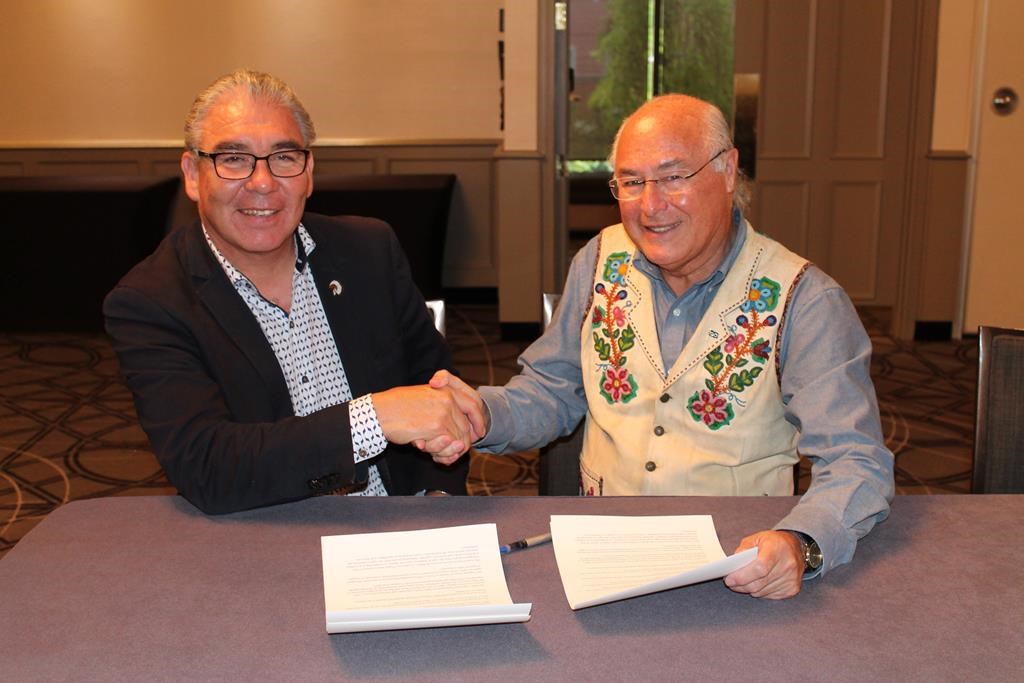The chief of one of the largest eastern Metis groups is condemning an agreement between the Assembly of Nova Scotia Mi’kmaq Chiefs and the Metis National Council, saying it creates “unnecessary harm and anguish.”

Karole Dumont of the Council of the First Metis People of Canada says the memorandum of understanding between the two groups is “fear mongering” and an attempt to “raise the Mi’kmaq against the Metis” – many of whom she says share the same ancestors.
The agreement “paints all the Metis in Nova Scotia with the same negative brush, and condemns all of them for the wrongs of a few,” she said in a statement.
In amemorandum of understanding released Wednesday, the Mi’kmaq chiefs and the Metis National Council said they will work together to educate the public about what they call the “legitimate Metis Nation and Mi’kmaq issues.”
READ MORE: Metis and Mi’kmaq nation leaders meet to discuss trend of Metis self-identification
They expressed concern with what they called a growing number of people “misrepresenting” themselves as Metis, and using these claims to try to access Aboriginal and Treaty rights.
“The only rights holders in Nova Scotia are the Mi’kmaq,” Chief Terrance Paul, co-chairman of Assembly of Nova Scotia Mi’kmaq Chiefs, said in a statement. “We are the original peoples of these lands, and we have spent decades establishing our treaty and Aboriginal rights and then working on the implementation of these rights.”
But Dumont said the allegations questioning the eastern Metis’ claims are “misleading and unfounded.”
She argues that the origin of the eastern Metis dates back hundreds of years, and that the agreement is about “division not unity.”
WATCH: Fort McKay the first Metis community to buy its own land

She added that the memorandum of understanding is “a sad manipulation of eastern Canada’s Indigenous peoples.”
“Our research proves the 17th century birth of the eastern Metis nation, and its survival despite oppression and genocide through countless wars and conflicts,” Dumont said.
“We don’t identify as Mi’kmaq but as Metis of Mi’kmaq ancestry, among other nations.”
Census data show the number of people who call themselves Metis soared nearly 125 per cent in Nova Scotia from 2006 to 2016, with dozens of new Metis groups cropping up over the same period.
READ MORE: The controversial rise of the eastern Metis
Earlier this year, four Nova Scotia Metis groups formed an alliance.
The Highland Metis Nation, the Bras d’Or Lake/Unama’ki Voyageur, the Eastern Shore Metis Nation and the Association des Acadiens-Metis Souriquois signed a friendship treaty in July.
A press release at the time said the four eastern Metis organizations would work together on a number of issues, including historical and genealogical research, education bursaries and scholarships and improving relationships between the Mi’kmaq and the Metis in Nova Scotia.
A spokeswoman and counsel for the Acadiens-Metis association said Thursday that members of the group “fully acknowledge and support the identity, treaty rights and sovereignty of the Mi’kmaw and the Metis Nation.”
“However, it should be understood that the Acadien-Metis have their own identity, history, and culture distinct from either and are also rights-bearing peoples as descendants of the Mi’kmaw who signed the Peace and Friendship Treaty of 1725/26 and all subsequent ratifications,” Daphne Williamson said in an email.
“Rather than compete with other rights-bearing groups, they wish to work collaboratively in the spirit of mutual understanding and respect.”



Comments